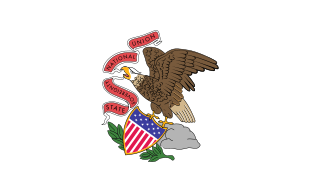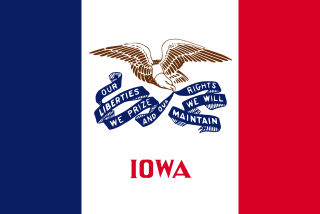The 9th Regiment Illinois Volunteer Cavalry was a cavalry regiment that served in the Union Army during the American Civil War.

The 99th Regiment Illinois Volunteer Infantry was an infantry regiment that served in the Union Army during the American Civil War.

The 3rd Regiment Iowa Volunteer Infantry was an infantry regiment that served in the Union Army during the American Civil War.
The 82nd Regiment Illinois Volunteer Infantry, known as the "2nd Hecker Regiment," was an infantry regiment that served in the Union Army during the American Civil War. It was one of the three "German" regiments furnished to the Union by Illinois. Approximately two-thirds of its members were German immigrants and most of the other third was composed of immigrants from various countries. Company C was almost entirely Jewish, and Company I all Scandinavians.
The 31st Regiment Illinois Volunteer Infantry, nicknamed the "Dirty-First," was an infantry regiment that served in the Union Army during the American Civil War.
The 32nd Regiment Illinois Volunteer Infantry was an infantry regiment that served in the Union Army during the American Civil War.
The 35th Regiment Illinois Volunteer Infantry was an infantry regiment that served in the Union Army during the American Civil War.
The 17th Regiment Illinois Volunteer Infantry was an infantry regiment that served in the Union Army during the American Civil War.
The 19th Regiment Illinois Volunteer Infantry was an infantry regiment that served in the Union Army during the American Civil War. Three companies formerly with Col. Elmer Ellsworth's Zouave Cadets wore a zouave uniform consisting of a dark blue zouave jacket with red trimmings, red pants, leather gaiters, a sky blue shirt, red sash, and a red French styled kepi with a dark blue band. The jacket cuffs were trimmed in yellow-orange and red. Brass buttons went down both fronts of the jacket. They were organized into four separate companies on May 4, 1861, in Chicago. It was consolidated and mustered into Federal service as the 19th Illinois Volunteer Infantry on June 17, 1861. It was mustered out at Chicago on July 9, 1864.
The 20th Regiment Illinois Volunteer Infantry was an infantry regiment that served in the Union Army during the American Civil War.
The 21st Regiment Illinois Volunteer Infantry was a militia infantry regiment that served in the Union Army during the American Civil War.
The 22nd Regiment Illinois Volunteer Infantry was an infantry regiment that served in the Union Army during the American Civil War.
The 26th Regiment Illinois Volunteer Infantry was an infantry regiment that served in the Union Army during the American Civil War.
The 36th Regiment Illinois Volunteer Infantry was an infantry regiment that served in the Union Army during the American Civil War.

The 42nd Regiment Illinois Volunteer Infantry was an infantry regiment that served in the Union Army during the American Civil War.
The 43rd Regiment Illinois Volunteer Infantry, known as the "Koerner Regiment" after Gustav Körner, was an infantry regiment that served in the Union Army during the American Civil War.
The 46th Regiment Illinois Volunteer Infantry was an infantry regiment that served in the Union Army during the American Civil War.
The 51st Regiment Illinois Volunteer Infantry was an infantry regiment that served in the Union Army during the American Civil War.
The 48th Regiment Illinois Volunteer Infantry was an infantry regiment that served in the Union Army during the American Civil War.
The 11th Regiment Illinois Volunteer Infantry was an infantry regiment that served in the Union Army during the American Civil War. It was originally formed as a three-month volunteer unit at the beginning of the war, and then reorganized as a three-year unit, in which role it served until the end of the war.











